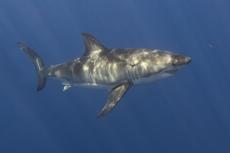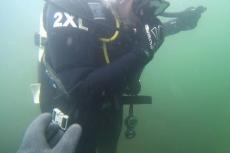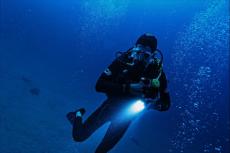Understanding the Octopus: A Dive into Its World
The octopus displays a remarkable intelligence. Its complex behaviours emerge from a decentralized nervous system, and survival depends on a delicate balance of exploration, fear, and adaptability.
A review published in the journal Animal Sentience describes the surprising abilities found so far among octopus species.
Intricate Nervous System and Cognition
The octopus is a remarkable creature with a nervous system unlike any other. The nervous system is not centralized in a brain as they are in the vertebrates. In fact, three-fifths of octopus neurons are located in their arms, which control complex movements and actions. This decentralized system allows these unusual animals to perform tasks that seem to require advanced cognitive abilities, such as problem-solving and flexibility.
Camouflage and Communication
One of the most fascinating aspects of octopus behaviour is their ability to change their appearance. Their skin is equipped with chromophores—elastic sacs filled with pigment. When these sacs expand, they display specific colours of yellow, red, or brown. When they contract, the octopus turns white. The octopus below turned white as it slid out of view as if the colour change indicated fear.

The ability of the octopus to change colour, often in changing patterns, added to their capacity to change skin texture and posture, allows them to blend perfectly into their environment. Curiously, octopuses see only polarized light, but their camouflage is tuned to the vision of their predators.
Octopuses also use their skin for communication. For example, they can create a "Passing Cloud" display, which makes it look like a shadow is moving across their body, possibly to startle prey. They also have defensive displays, such as spreading their arms wide to appear larger when threatened.
Complex Arm Movements
The eight arms of an octopus are a marvel of biological engineering. Each arm can move in an almost infinite number of ways, thanks to a complex system of muscles. This flexibility allows them to perform intricate tasks, such as opening jars, digging for prey, or even using one arm to block a burrow entrance while another captures hidden prey. For instance, octopuses have been observed using one tentacle to create a lure for prey, while the rest of the animal remains camouflaged. This is a clear example of strategic thinking.

The octopus above can scarcely be seen it is so well camouflaged, but it's white tentacle stands out as it wiggles it to attract prey.
Their ability to coordinate these movements suggests a level of intelligence that rivals mammals and birds.
Exploration and Playfulness
Octopuses are naturally curious and love to explore. They often manipulate objects, showing a strong drive to investigate their environment. In captivity, octopuses have been known to dismantle their tanks, cut cables, and even play with objects like floating bottles, which they push around with jets of water. (The octopus' jet is visible in the photograph below.)

Such playful and inventive behaviours as these indicate a level of cognitive complexity not found in other invertebrates.
Fear and Survival
Despite their intelligence and adaptability, octopuses are vulnerable to many predators. They live solitary lives, constantly on alert for threats. Their main defence is their ability to camouflage, but when this fails, they can quickly escape using jet propulsion, sometimes releasing ink to obscure a predator's vision.
Flexibility and Problem-Solving
Octopuses are incredibly adaptable. When faced with a challenge, such as opening a clam shell, they use different strategies until they succeed. This ability to try multiple approaches until one works is a key aspect of their intelligence. They also show remarkable foresight. For example, they will carry coconut shells across the ocean floor to use as shelter later. At the location of their choosing, they go inside and hold the two shells together using their adhesive suckers!
Social Challenges and Reproduction
Octopus mating is a risky affair. Males and females are solitary, and when they do come together to mate, there’s a significant risk involved, especially for the male. Females can be aggressive and even cannibalistic after mating, making the process a dangerous gamble for survival.
In summary, the world of the octopus is a complex one, full of advanced behaviours that challenge our understanding of intelligence in the animal kingdom. From their intricate camouflage and communication systems to their problem-solving abilities and playful nature, octopuses continue to fascinate and amaze scientists and the public alike.






























